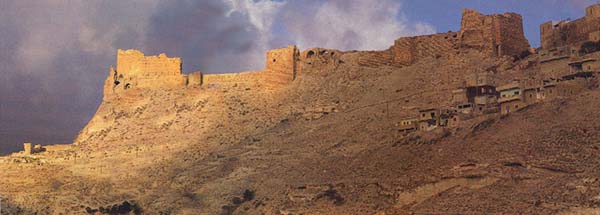Image Details

Jane Taylor/Sonia Halliday Photographs
A 12th-century Crusader castle perches atop a 2,500 foot-long plateau in central Jordan, once the site of Kir-hareseth, the ancient capital of Moab. Isolated by a 300-foot-deep valley, this location, today modern Kerak, has been a strategic military stronghold throughout much of history.
Nearly 2,000 years before the Crusader castle was built, allied Hebrew-Edomite armies surrounded the badly beaten Moabite army after its retreat to Kirhareseth. According to the account in 2 Kings 3:26–27, the desperate Moabite king Mesha sacrified his oldest son as a burnt offering on top of the city wall, in full view of the conquering armies. After this dramatic death, for reasons not clarified in the Biblical account, the Hebrews and the Edomites returned home without taking the city.
